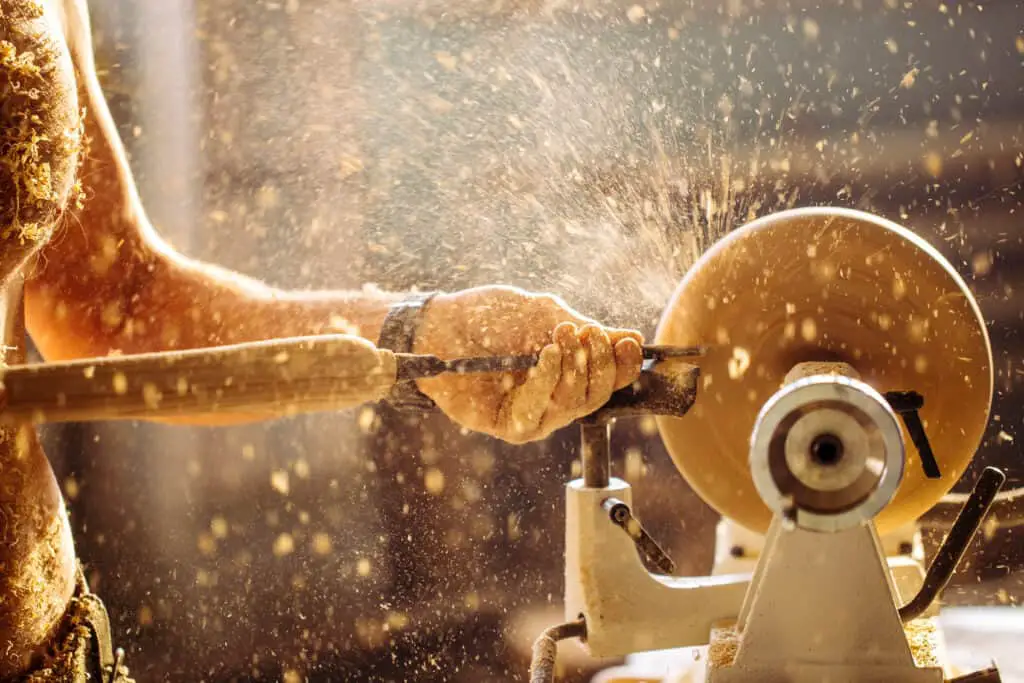Is Leopard Wood Good For Woodworking?
Leopardwood is a unique-looking type of wood that captivates viewers and craftsmen alike, including woodworkers. Many woodworkers are unfamiliar with Leopardwood and the role it plays in woodworking.
Leopardwood is dense and stiff, making it difficult for woodworking, especially with hand tools. Found in Central and South America, this exotic wood has an eyecatching pattern. Woodworkers who do use Leopardwood have found that it is not an easy wood to work with.
Are you interested in ordering some Leopardwood for your workshop? Before placing your order, there are a few things you should consider. This wood might look pretty, but it can be tough to handle. It's not impossible though, so if you're interested, read below!
What Is Leopardwood?
Before we discuss how Leopardwood works in woodworking, let's first explain what it is. Leopardwood is found in Central America and some northern areas of South America. These trees can grow to be about 150 feet tall and 4 feet wide.
Leopardwood is typically dark, reddish-brown in color with lighter colored spots or thin stripes in it. These unique spots result from the tree species' broad medullary rays. These rays visually depict how the tree stores its nutrients. When researching Leopardwood, you will often find it referred to as lacewood. Although similar, the two species are not the same.
The confusion between the two wood species is in their similar spotted patterns that resemble lace. Although lacewood is a type of wood, the word also describes any wood that exhibits this lacey pattern. In this sense, Leopardwood is a type of "lacewood."
Leopardwood and lacewood can be identified from each other by hardness, color, and pattern shape. True Leopardwood is much darker, heavier, and stronger than lacewood. Additionally, lacewood has more of a consistent pattern with diamond-like flecks. On the other hand, Leopardwood has rounder, less consistent spots.
Other wood species that may be confused with Leopardwood are Australia's Northern and Southern Silky Oaks. Like lacewood, Leopardwood is darker in color and much harder than both of these tree species.
Leopardwood and Woodworking

Now that you know a bit more about Leopardwood and what it is, we can discuss its relationship with woodworking.
Historically, woodworkers did not use Leopardwood. As technology and tools advance, Leopardwood has become slightly more manageable. However, even modern tools struggle to conquer Leopardwood.
Leopardwood has a Janka rating of 2,130. This rating explains the durability of the wood species for flooring use. Although you will not be using Leopardwood for flooring, this rating also expresses the hardness of the wood.
So let us put the rating into perspective. The industry standard for floors is a Janka rating between 1,000 and 1,200. With a rating double the industry standard, this is a resilient wood species.
How does a wood species receive its Janka rating? A machine forces an 11.28mm steel ball against the wood. When the steel ball has enough force to embed halfway into the wood, this is the Janka rating. In other words, Leopardwood requires a 2,130-pound force to embed a steel ball halfway into it. That is some tough wood!
Not only is Leopardwood hard, but it is also dense. Density is a crucial factor in woodworking because it affects the durability of projects. If you specialize in making wood furniture, then dense Leopardwood is an excellent choice.
Although Leopardwood has the durability that many woodworkers desire, its hardness makes it difficult to work. Working Leopardwood with hand tools is a difficult task. The use of a hand planer will often result in the wood's speckled pattern flaking off.
Even if you use machines to work the Leopardwood, they may struggle. One woodworker noted that his saw shook more and was much louder when running Leopardwood through it. Be cautious when working Leopardwood to avoid damaging your machines.

Although stiff, Leopardwood is suitable for woodturning projects. The main issue here is that the final product is usually coarse in texture. You may need to finish off woodturning projects with sandpaper by hand. Luckily, Leopardwood does not collect in the sandpaper, unlike many other exotic kinds of wood.
While working Leopardwood, be mindful of splinters. Splinters from these boards are much longer and sharper than other woods. Another common problem when working Leopardwood is tearout in the planer. Tearout can be avoided by carefully reading the wood's grain and wetting down areas where the grain changes directions.
In most woods, this occurs at the end of the boards, where the grain changes. Leopardwood is prone to tearout throughout the entire board because of its intricate grain patterns.
Leopardwood boards will have a variety of grain patterns. Even if the planks came from the same tree, the grain could vary. Additionally, the grain of a Leopardwood board will be different throughout the different sections of the board. If you are completing a project that requires consistent grain patterns, get visual verification before placing your order.
Not only is Leopardwood problematic to work with, but it is also expensive. Leopardwood is an exotic wood, and therefore, must ship to you at an added cost. Standard board sizes are usually about 20 dollars each. However, if you request longer, wider boards, the price will continue to rise.

Although Leopardwood can be expensive and challenging to work with, this type of wood is easy to finish. When using glue on Leopardwood, be sure to use a darker colored glue or risk it showing against the wood's dark color.
Leopardwood will also hold nails and screws well. However, we advise you to predrill for screws because of the wood's hardness.
Leopardwood is perhaps one of the most durable woods available for woodworking. Not only is the final product strong, but Leopardwood is highly rot-resistant. Leopardwood's rot resistance is helpful in areas where there are high levels of humidity.
Overall, Leopardwood does not seem like it is suitable for woodworking. The wood's extreme hardness and varying grains make it difficult to work. While beginning woodworkers should avoid Leopardwood, expert woodworkers looking for a challenge may enjoy using Leopardwood in their projects. Additionally, the wood's leopard pattern will make any project look phenomenal.
If you like this article please leave a comment and check out my instagram account here. I try and minimize advertising on this website by selling silicone mats.

